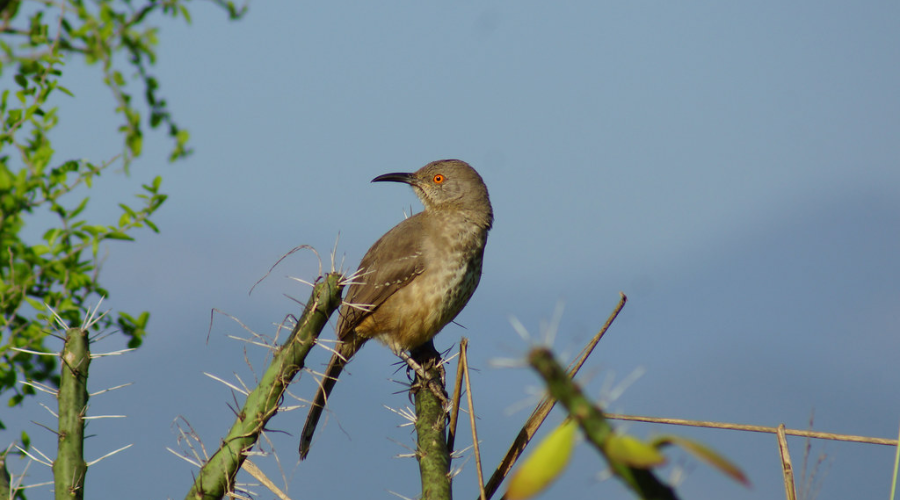Many people find themselves intrigued by the term “huitlacoche animal,” especially if they’re unfamiliar with it. While huitlacoche, or “corn smut,” is a well-known Mexican delicacy, the term “animal” attached to it adds an element of mystery. In this article, we’ll clear up any confusion surrounding the “huitlacoche animal” and delve into the captivating world of the Toxostoma cinereum, a fascinating creature often associated with this enigmatic name.
Associated Historical Context of Huitlacoche Animals
To address a common misconception, it’s crucial to distinguish between the terms involved. In Mexican cuisine, “huitlacoche” refers to a fungal disease that affects maize, resulting in a delicacy with a unique, earthy flavor cherished in various regions of Mexico. On the other hand, the scientific name “Toxostoma cinereum” pertains to a specific bird species, which has no connection to the maize fungus. Although these terms might seem perplexing when mentioned together, each holds its own intriguing history and cultural importance.
Features and Physical Description
The physical description of the huitlacoche animal varies widely across regions and narratives. Often depicted as a small mammal, it resembles creatures like ferrets or weasels, with dark fur that helps it blend into the shadows. In some stories, this elusive creature is described as having glowing eyes that emit a soft, eerie light in the darkness.
Beyond its appearance, the huitlacoche animal is renowned for its extraordinary abilities. Among its most captivating traits are its reputed skills in shape-shifting, becoming invisible, and evading detection. These remarkable attributes have significantly contributed to the creature’s allure and the challenge of pinpointing its true nature.
The Evolution of Huitlacoche Traditions
The mythology surrounding the huitlacoche animal has evolved significantly over time. Initially, these stories likely emerged as explanations for natural phenomena or as moral lessons meant to convey important teachings. As these tales were handed down through generations, they absorbed unique cultural elements, reflecting the values and beliefs of the storytellers. This evolving narrative demonstrates not only the adaptability of myths and legends to changing cultural contexts but also highlights the creativity inherent in human storytelling. In this way, the huitlacoche animal transcends its role as a mere mythical figure, becoming a dynamic cultural artifact that evolves with each era and locale.
Exploring the Wonders of Toxostoma cinereum in Nature
The Toxostoma cinereum, a medium-sized bird, stands out for its distinctive call and behavior. Commonly found in various regions across North America, this bird is noted for its remarkable natural camouflage. Its greyish-brown plumage blends seamlessly with its environment, especially in shrublands, providing effective concealment from potential predators. The bird’s unique adaptations and behaviors make it a fascinating subject for those interested in the intricacies of wildlife.
Huitlacoche in Society: Beyond a Culinary Delight
Returning to the culinary world, huitlacoche, or corn smut, holds a rich history within Mesoamerican cultures. Long before it became a sought-after delicacy, Native American tribes prized huitlacoche for its unique flavor and nutritional benefits. Often perceived as merely a crop disease, huitlacoche symbolizes the harmonious relationship between culinary expertise and the natural world. Its transformation from a byproduct to a coveted ingredient in haute cuisine reflects its remarkable journey and enduring significance.
Preserving the Legacy of Toxostoma cinereum
Turning our attention back to the Toxostoma cinereum, it’s crucial to acknowledge the contemporary challenges faced by this bird. The population of this endangered species has experienced fluctuations due to habitat loss and climate change. Efforts to preserve its heritage are essential to ensuring the survival of Toxostoma cinereum and maintaining the delicate balance of its natural habitat. Addressing these challenges involves a concerted effort to protect and restore its environment, contributing to the conservation of this unique and valuable species.
From Farm to Feast: Huitlacoche’s Culinary Journey
Huitlacoche Pajaro, or corn smut, is a fungus that transforms corn kernels into large, bulbous, and darkened structures. Despite being seen as a mere pest in the U.S., huitlacoche is a beloved delicacy in Mexico. Its rich, smoky flavor is often compared to truffles and mushrooms, making it a staple in Mexican cuisine. Huitlacoche enhances dishes like tamales, quesadillas, soups, and sauces. This culinary journey from a simple fungus to a gourmet ingredient highlights the creativity and ingenuity of Mexican gastronomy.
Conservation of Toxostoma cinereum: Challenges and Achievements
In the face of a rapidly changing environment, conserving the Toxostoma cinereum, or greyish-brown thrasher, presents several challenges. Major threats include predation, climate change, and habitat destruction. Conservationists are actively working to address these issues through breeding programs, public awareness campaigns, and habitat restoration projects. Notable successes, such as the establishment of protected areas and the successful rearing of birds in captivity, underscore the importance of continued efforts in preserving this unique species.
A Brief Overview of Toxostoma cinereum’s Ecology
The Toxostoma cinereum primarily inhabits semi-arid and desert regions of North America. It thrives in shrublands and open woodlands, which provide ample food and shelter. As a vital part of its ecosystem, this bird aids in seed dispersal and pest control, given its diet of insects and small fruits. The female Toxostoma cinereum constructs a cup-shaped nest for her eggs, showcasing interesting reproductive and nesting behaviors.
Huitlacoche’s Cultural Significance
Huitlacoche, a cherished ingredient with origins in the Aztec Empire, holds a prominent place in Mexican culture. The Aztecs appreciated its unique flavor and health benefits, and today, huitlacoche remains a staple in Mexican cuisine. It symbolizes the deep connection between the people of Mexico and their culinary heritage. The diverse and creative ways in which both home cooks and professional chefs incorporate huitlacoche into their dishes reflect Mexico’s rich gastronomic tradition, showcasing the enduring influence of this ancient delicacy.
A Call to Action for Preserving the Legacy of Toxostoma cinereum
Preserving the Toxostoma cinereum, also known as the greyish-brown thrasher, requires a collective effort from governments, the public, and environmentalists. This bird, with its vibrant plumage and unique call, epitomizes the natural splendor of North America. To safeguard its legacy, we must:
- Implement effective conservation measures to protect its habitat.
- Support conservation projects and initiatives.
- Advocate for policies that promote biodiversity preservation.
This call to action underscores the importance of environmental stewardship to ensure that future generations can continue to appreciate and enjoy the beauty of Toxostoma cinereum.
An Exploration of Nature’s Allure
The story of Pajaro Huitlacoche and Toxostoma cinereum represents a journey of discovery, celebrating the wonder and enchantment of the natural world. By exploring the history, cultural significance, and ecosystems of these fascinating entities, we gain a deeper understanding of Earth’s intricate web of life. This journey not only highlights the interconnectedness of all living things but also emphasizes the importance of preserving our natural heritage.
The Future of the Huitlacoche Myth
The legend of the huitlacoche animal holds promise for the future. As the world becomes increasingly digital and interconnected, there is a growing interest in reconnecting with folklore and ancient traditions. The huitlacoche, with its rich narrative and cultural significance, has the potential to contribute to the current folklore revival. It can evolve to engage new audiences and adapt to modern media, ensuring that its legacy and lessons are preserved for future generations.
Final Verdict
The exploration of Toxostoma cinereum’s mysteries and the evolution of huitlacoche as a culinary ingredient highlight nature’s marvels. Whether it’s through a delicious dish or a bird’s song, both embody the complexity and beauty of the natural world. By cherishing and protecting these wonders, we ensure that the magic they bring to our lives endures for generations to come.
Explore cutting-edge tech insights and trends at Kongotech.pro.



